Hotel Business Intelligence: The Secret Sauce to Hospitality Gold
Oct 26, 2025
 Mika Takahashi
Mika TakahashiPopular Categories
Hotel Technology & InnovationHotel Operations OptimizationDigital MarketingIndustry TrendsRevenue ManagementHospitality Industry
Popular Categories
Trending Post

Hotel Walk Letter Template: Professional Guest Communication

Online Travel Agents: What They Are and How They Work
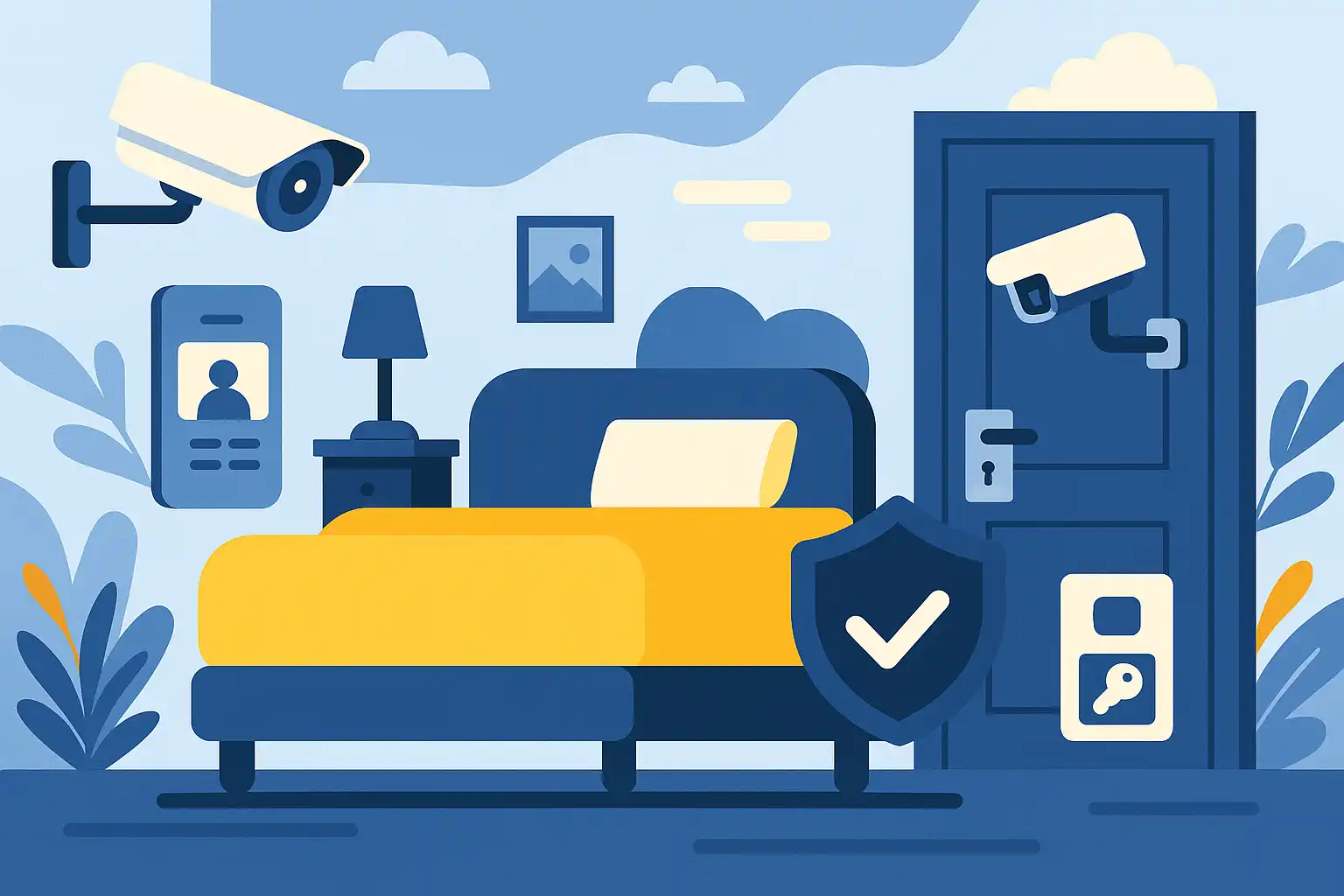
Hotel Security Systems: Modern Protection Solutions

Hotel Advertising: Complete Guide to Boost Bookings and Revenue
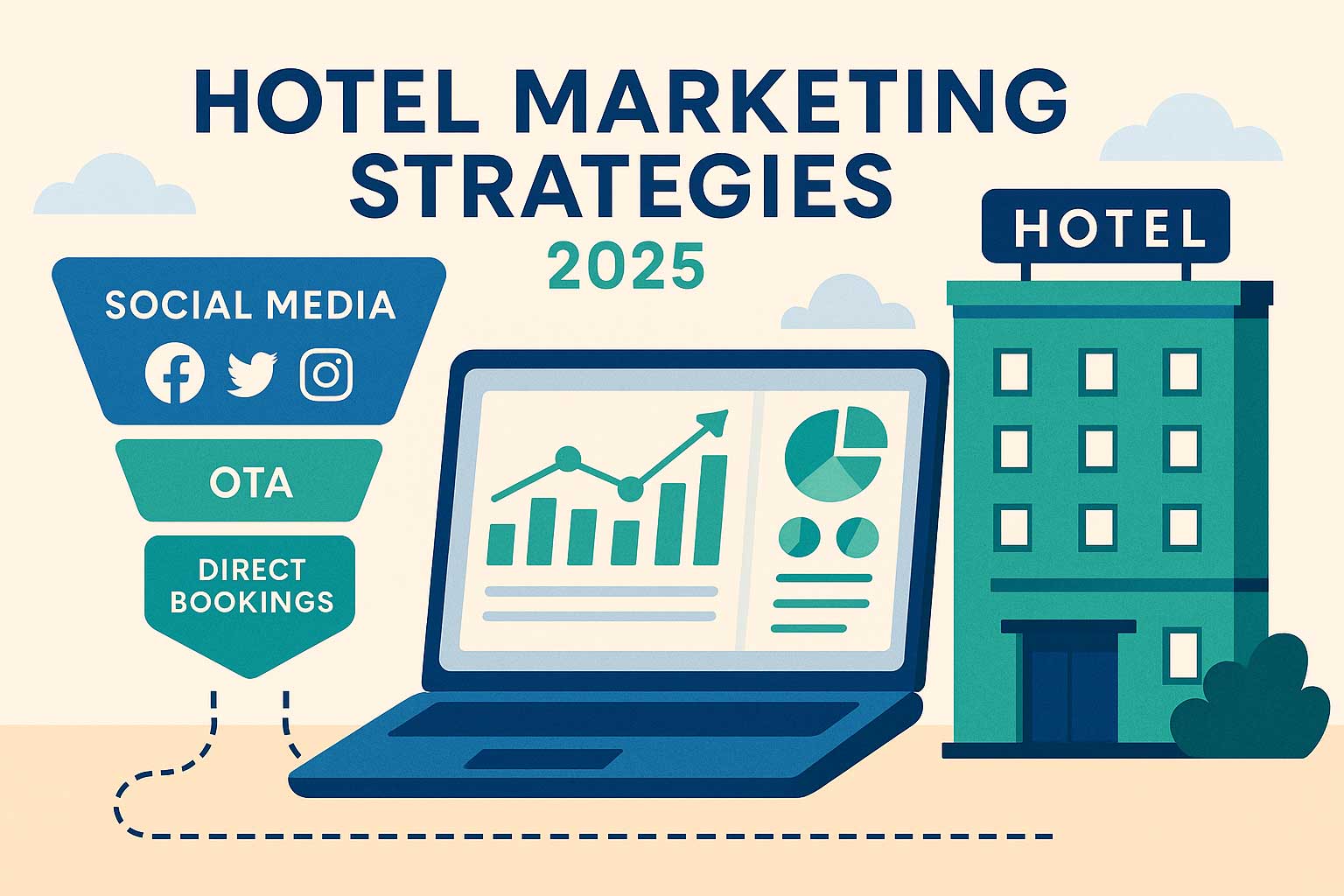
25 Hotel Marketing Strategy Ideas for 2025: Complete Guide

AI Reservation Agent: Revolutionizing Hotel Booking and Guest Experience

PMS Communication: Streamlining Property Management Through Effective Guest Messaging
Table of contents
If you’ve ever wondered how some hotels seem to consistently pull ahead in revenue and guest satisfaction, the secret often lies in their ability to make smart, data-driven decisions. Hotels that use hotel business intelligence effectively tend to outperform their competitors by 10-15% in revenue per available room. In today’s fast-paced hospitality world, knowing how to analyze data and turn it into actionable insights can be the difference between thriving and just getting by.
Hotel business intelligence marks a big shift away from gut feelings and guesswork toward strategic decisions backed by solid data. This guide is here to help you understand everything about hotel business intelligence—from basic concepts to advanced strategies for integrating hotel BI solutions into your hotel’s daily operations.
Whether you run a cozy boutique hotel or manage a sprawling chain, tapping into your hotel’s data can unlock new revenue streams and boost operational efficiency. Let’s dive into how hotel business intelligence software can transform your business and give you a competitive edge.
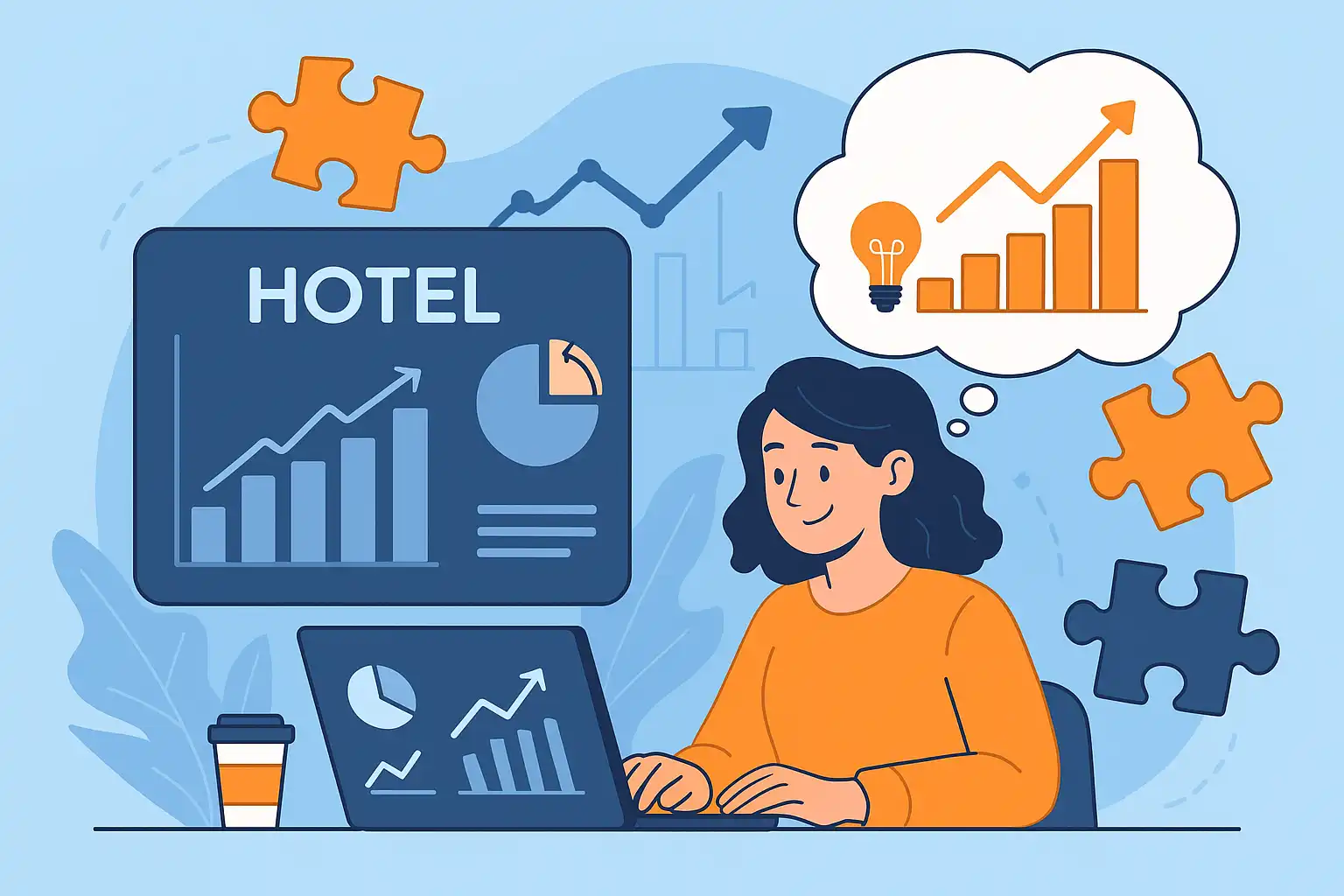
What is Hotel Business Intelligence?
At its foundation, hotel business intelligence is about gathering, organising, and analysing data from both within and outside your hotel to assist you in making more informed decisions. It transforms raw data from your property management system, point of sale, online booking platforms, and external market sources into clear, actionable insights that help with anything from revenue management to improving guest experiences.
Unlike generic business intelligence, hotel BI focusses on the hospitality industry's specific needs and issues. It combines data from various sources into a single complete perspective of your hotel's performance, allowing you to see the big picture.
However, hotel business intelligence goes beyond simply reporting figures. It is about using real-time data to optimise pricing using dynamic strategies, improving operations using demand forecasting, and personalising guest experiences to increase satisfaction. When used correctly, BI technologies enable you to manage inventory, pricing, and resource allocation with precision that manual processes cannot match.
The fact that hotel business intelligence tracks hospitality-specific KPIs makes it particularly effective. Instead of general sales figures, it focusses on measures like as average daily rate (ADR), revenue per available room (RevPAR), and occupancy rates—numbers that have a significant impact on the hotel business.
Technical Definition and Core Components
Behind the scenes, hotel business intelligence relies on a technical process called Extract, Transform, Load (ETL). This process pulls data from various hotel systems, cleans and standardizes it, then loads it into a central data warehouse where it can be analyzed.
Data integration is the backbone of any solid BI setup. Modern hotel business intelligence solutions connect smoothly with your Property Management System (PMS) like Prostay, Opera, or Protel; Point of Sale (POS) systems such as Tableview; Revenue Management Systems (RMS) like IDeaS or Duetto; and Channel Managers that spread your inventory across booking platforms.
What really sets advanced hotel BI platforms apart is their ability to process data in real time. While historical data helps with long-term planning, real time insights let you react quickly to changes in market demand, pricing opportunities, and operational issues. This means you can make both tactical and strategic decisions based on the freshest data available.
Here are some of the key performance indicators that hotel business intelligence tools focus on:
- Average Daily Rate (ADR): The revenue you earn per occupied room, calculated by dividing room revenue by rooms sold.
- Revenue Per Available Room (RevPAR): Total room revenue divided by all available rooms, regardless of occupancy.
- Average Length of Stay (ALOS): How many nights guests typically stay.
- Gross Operating Profit Per Available Room (GOPPAR): A broader measure of profitability that goes beyond just room revenue.
To make sure data is consistent and comparable, hotel BI systems follow the Uniform System of Accounts for the Lodging Industry (USALI). This is especially important if you manage multiple properties and want to benchmark performance across your portfolio.
Types of Data in Hotel Business Intelligence
Operational Data Sources
Your Property Management System (PMS) is the heart of your hotel’s data, tracking everything from guest reservations to check-ins, room assignments, and service requests. This info helps you plan operations and anticipate guest needs.
Housekeeping management systems add another layer by tracking room status, cleaning schedules, maintenance, and service quality—critical for keeping rooms ready and guests happy.
Front desk data gives insight into upselling success, complaint resolution, and guest satisfaction scores, while marketing campaigns benefit from knowing which services guests are buying and when.
Labor management data helps you optimize staffing by analyzing productivity and scheduling relative to occupancy, which directly impacts your bottom line.
Financial and Revenue Data
Point of Sale systems capture revenue from beyond just rooms—think food and beverage, spa services, meeting rentals, and retail. Analyzing these streams helps identify which areas bring in the most profit and where you might grow.
Revenue Management Systems provide pricing strategies, demand forecasts, and competitor rate insights that feed into your dynamic pricing decisions. When integrated with BI platforms, you can track how well your pricing performs versus forecasts.
Hotel accounting systems offer detailed cost and profit analysis, helping you understand which departments are most profitable and where budgets are on track or need adjustment.
Channel Manager data reveals the true cost of bookings across different platforms, helping you optimize commissions and maximize direct bookings.
Guest and Market Intelligence
Guest behavior analytics turn individual bookings into powerful segmentation tools. By understanding booking patterns and loyalty engagement, you can craft targeted marketing and personalized experiences that encourage repeat visits and higher spend.
Online Travel Agency (OTA) metrics track booking volumes, conversion rates, and rate parity, helping you maintain competitive positioning across channels.
Competitor intelligence from rate shopping tools and market analysis gives you context for hotel pricing and marketing strategies, so you can position your property effectively.
Direct booking data from your website shows how visitors move through your booking funnel, letting you optimize marketing spend and improve conversion rates.
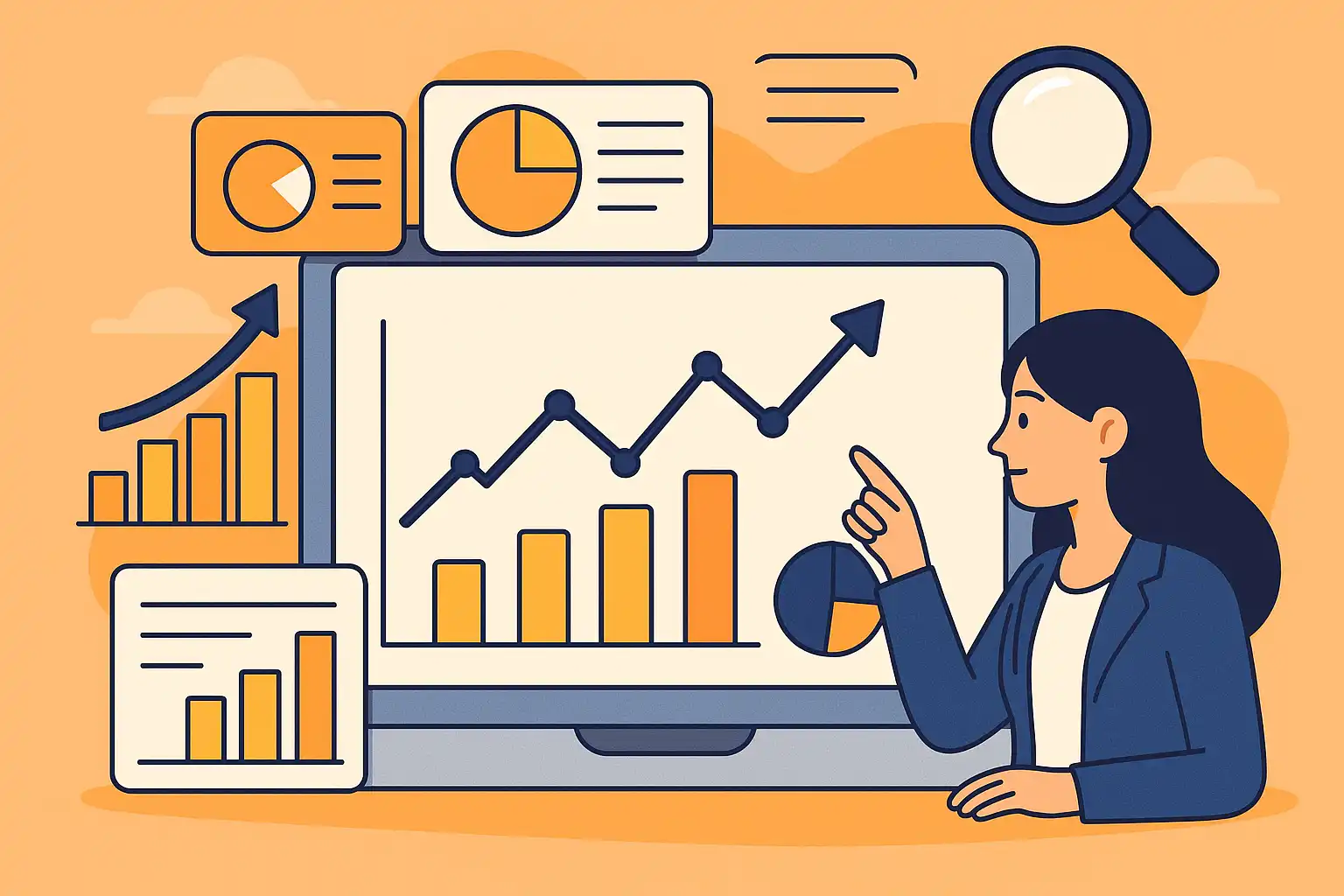
Hotel Business Intelligence Software Explained
Hotel business intelligence software consolidates all of your data into easy-to-use dashboards designed for hospitality professionals. It eliminates the need for manual data wrangling across systems, giving real-time insights via intuitive interfaces that everyone on your team may access.
Cloud-based hotel BI solutions have made these technologies available to hotels of any size. Instead of pricey, complicated IT setups, subscription models for basic analytics start as little as $200-500 per month.
API connectors allow modern hotel BI platforms to seamlessly integrate with over 200 hotel software systems, including leading PMS suppliers such as Prostay, Oracle Hospitality, and Infor. This means that you rarely need to change existing technology to implement advanced business intelligence solutions.
Automated reporting eliminates the need for tedious human spreadsheet effort. Instead of spending hours gathering data from various systems, hotel BI software provides standardised reports automatically, allowing your revenue and general managers to focus on strategy.
The most advanced solutions provide predictive analytics based on machine learning. These systems use historical data to estimate future demand, allowing you to make more proactive decisions. Hotels frequently report that these features boost demand forecasting accuracy by 15-25%.
Key Technical Features and Capabilities
Real-time dashboards let you customize KPIs based on who’s using the data. Revenue managers can zero in on pricing and demand, general managers get an overall property snapshot, and department heads see the metrics that matter most to their teams.
Advanced reporting tools allow you to drill down into data to spot issues or opportunities. For example, if RevPAR dips, you can quickly find out if it’s due to lower occupancy, falling ADR, or underperforming market segments.
Data warehouses store years of historical data, helping you analyze trends and seasonal patterns—essential for budgeting and long-term planning.
Mobile-friendly BI tools mean you can check in on your hotel’s performance anytime, anywhere, whether you’re in a meeting or on the road.
Integration APIs support major hotel software, including:
- PMS platforms like Prostay, Opera, Protel, and RMS Cloud
- Revenue management systems such as IDeaS, Duetto, and RevPAR Guru
- Channel managers like SiteMinder, RateTiger, and D-EDGE
- POS systems including Tableview, Micros, and Revel
Automated alerts notify you when key metrics hit critical levels, so you can react quickly to competitor rate changes, unusual booking patterns, or operational issues that might affect guest satisfaction.
Benefits for Hotels of Different Sizes
Small Independent Hotels (1-50 rooms)
Entry-level hotel BI solutions offer great value without overwhelming smaller operations. These platforms focus on key metrics like occupancy, ADR, and direct booking rates, giving owner-operators quick insights without drowning in data.
Automated competitor rate monitoring helps small hotels stay competitive without a dedicated revenue team, while basic forecasting tools support seasonal demand planning and staffing.
Mid-size Hotels and Small Chains (51-300 rooms)
Multi-property comparison features become crucial here. Benchmarking portfolio performance helps you spot winners and share best practices.
Advanced revenue management integration supports dynamic pricing that can boost RevPAR by 8-12%. Department-level profitability insights guide resource allocation and marketing focus.
Guest segmentation tools enable targeted campaigns that increase conversions and revenue per guest.
Large Hotel Chains (300+ rooms)
Enterprise BI solutions handle massive data volumes across thousands of properties, balancing corporate oversight with local flexibility.
Sophisticated predictive analytics aid long-term planning, market expansion, and capital investment decisions.
Custom integrations accommodate legacy systems, while compliance reporting ensures brand and regulatory standards are met across all locations.
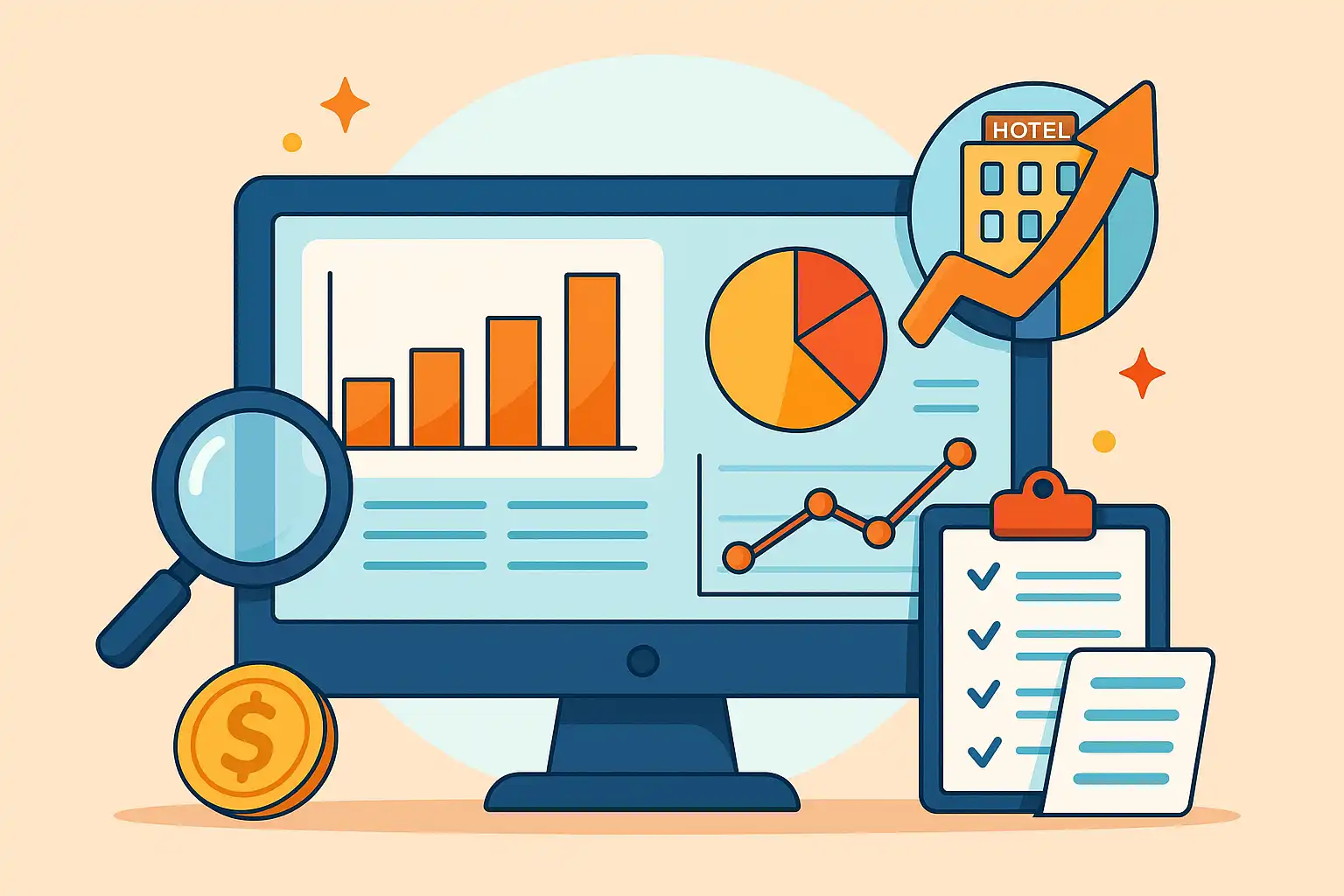
Implementation Strategies and Best Practices
Begin with a thorough data audit to determine what is available and identify gaps. This phase typically lasts 2-4 weeks and establishes the groundwork for success.
Next, select a BI platform that meets your integration requirements, scaleability, and budget. Make sure it works well with your current hotel technology stack and can expand with you.
Train your employees with role-specific training, ranging from CEOs who require high-level dashboards to managers who want to learn about operational analytics. Champions in each department can help to accelerate adoption.
Establish defined KPIs with baseline measurements and realistic expectations. Engage stakeholders to prioritise indicators that genuinely produce value over vanity numbers.
Expect 3-6 months for full deployment, with smaller properties often completing basic setups in 6-8 weeks.
Address change management by outlining obvious benefits and offering peer support. This helps overcome opposition and ensures that BI tools are used throughout departments.
When Hotel Business Intelligence is Essential
If you manage multiple properties and need centralized performance monitoring, BI tools are a must. They help you compare markets, identify profit drivers, and share best practices.
Revenue management with complex rate codes and multiple distribution channels demands BI analytics to optimize pricing.
In competitive markets where rates change quickly, automated BI solutions let you react fast and protect market share.
Seasonal businesses benefit from accurate demand forecasting for better staffing and inventory planning.
Hotels with diverse revenue streams need departmental profitability insights to focus efforts where they matter most.
If your property’s performance is slipping, BI tools can pinpoint whether the issue is pricing, operations, marketing, or competition.
When Hotel Business Intelligence May Not Be Necessary
Small properties with fewer than 20 rooms and modest operations may find that basic PMS reporting is sufficient.
Hotels in stable markets with consistent demand and limited competition may not require advanced forecasting or competitive intelligence.
If your budget is limited (less than $1,000 per month), investigate whether simple reports and spreadsheets will suffice before investing in business intelligence.
Properties with poor data quality or low technology adoption should address those issues before diving into analytics.
Seasonal or short-term activities may not benefit fully from BI's long-term insights.
If you're planning a large system redesign, you should wait until after to deploy BI.
Measuring Success and Return on Investment
Most hotels experience a 5-15% gain in RevPAR within the first year of BI implementation. Dynamic pricing based on BI data generates the greatest gains during peak demand.
Operational efficiency improves as manual reporting time is reduced by 30-50%, freeing up staff for guest service and planning.
Better forecasting and resource allocation, as well as waste reduction and workforce optimisation, all contribute to cost savings.
Faster decision-making allows you to modify rates swiftly to capitalise on market possibilities.
Data accuracy improves when automation reduces manual errors, with forecast precision frequently rising by 15-25%.
User adoption rates of 80% or higher within 90 days indicate a successful rollout; low adoption typically indicates that more training or simplification is required.
The hospitality industry is progressively transitioning to data-driven operations, making hotel business intelligence technologies increasingly important for staying competitive. Hotels that use complete analytics benefit from long-term increases in revenue, efficiency, and guest happiness.
Regardless of the size of your portfolio or property, the correct business intelligence technology may transform how you make choices and operate your everyday operations. The trick is to select tools that are appropriate for your level of complexity, budget, and growth plans—and to ensure that your staff completely adopts them.
Begin by meticulously reviewing your current data sources and identifying the insights that could most benefit your hotel's business. With the correct approach, hotel business intelligence becomes more than just a technological tool; it becomes your hidden weapon for long-term success and operational excellence.
